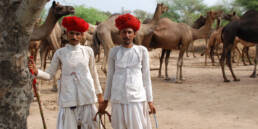Trophy hunting is only peripheral to my interests, so I thought I would skim through this thesis, merely focussing my attention on the most interesting points. But Bichel’s work is so interesting, erudite, and above all readable that I ended up with nine pages of notes.
The thesis starts with the killing of the lion, Cecil, by Walter Palmer in 2015 and goes on to document the consequent outrage. By the end of this fascinating investigation, that event, its background and its meaning have all been meticulously analysed. Bichel concludes:
“It certainly seems like the trophy hunting of just a few charismatic species in Africa gets most of the attention from western media and celebrities while domestic [North American and European] trophy hunting remains largely ignored.
It is time to take a step back and return to fundamental discussions about what makes hunting ethical or unethical; in the end we may discover that hunting trophies are not even at the centre of the controversy.”
The pages are full of surprises. I already knew that, historically speaking, hunting was regarded as a noble pursuit and a training for war. The trapping that the poor did to make ends meet, was considered neither hunting nor sporting. But I didn’t imagine that under King James I, feuds between English gentry were played out by poaching in rivals’ deer parks, with the aristocratic poachers dressed for combat in chain mail and helmets.
When it comes to the modern equivalent of this nobility, the US President Theodore Roosevelt is a case in point. A ‘Great White Hunter’ – I use the term ironically – he was one of those people who combined a love of nature and conservation, with no qualms about killing animals. Many non-hunters today are unable to conceive that this is possible and there are many ambiguities. On his expedition sponsored by the Smithsonian Museum of Natural History, he and his son personally shot 512 animals, including 17 lions. Their collection of plants and animals took the Smithsonian eight years to catalogue. Back home, Roosevelt was apparently saddened by the looming extinction of the American buffalo, but still eager to shoot one himself.
And how about this for imagery? Bichel is looking at the meaning of hunting trophies:
“The reasons that we would not commemorate grandmother by mounting her head on the wall are not only that it would be a much too unnerving reminder of death and mortality (hers and our own) or that Western common practice is to not preserve human beings in any form more physical than ashes. It is also that a decapitated head commonly symbolizes dominance and victory over the deceased.”
On hunting language:
“On one hand, some hunters wish to portray hunting as just another form of farming: carefully managed to be sustainable and no different in its ethical implications than agriculture. On the other hand, some hunters are deeply disturbed by this language, feeling that it is disrespectful and demeaning to talk about the deer they just killed as if it were a cabbage.”
Evidently, the most important issue to be considered is: does trophy hunting help wildlife conservation?
“The primary causes of population declines of the large mammals subject to trophy hunting, such as the African Elephant, African Buffalo, White Rhino, Black Rhino, African Wild Dog and Hartmann’s Mountain Zebra are habitat loss and degradation, competition with livestock, illegal or uncontrolled poaching for meat and trade in animal products (ivory, horn, etc.), and retribution killing for human-wildlife conflict (IUCN 2016: 7).”
That is not to say that trophy hunting is without problems, but it is not a primary cause of population decline. Moreover, Bichel makes a convincing argument for trophy hunting increasing the acceptability of dangerous wildlife. He points out the problem with the Western discourse:
“Ironically and unfortunately, the rural Africans who live with lions are the people whose opinions are heard the least, while the loudest and most visible objections to trophy hunting come from the people whose opinions should matter the least. These objections to trophy hunting in Africa often come from people who accuse all of their opponents of lacking empathy with animals. One might wonder, though, what happened to their own empathy with rural Africans? Animal Rights Activists and antihunters tend to be the same white, Western population segments that are staunchly anti-racist and anti-Trump and have their social media profiles adorned with “Black Lives Matter” slogans. This makes it curious to witness how often they end up promoting the distinctly racist and imperialist argument that the lived experiences of rural Africans and the science of African and Africa-based biologists should be discredited or ignored.”
I was particularly taken by Bichel’s classification of different stances on trophy hunting, which helped me clarify my thinking:
- The deontological stance, where killing individual animals is wrong, however positive the consequences might be for other individual animals or for the group.
- The consequentialist stance, in which the overall outcome is prioritised.
- The virtue ethics stance, where “trophy hunting is an activity that is morally wrong not because it involves the killing of animals per se, but because it involves the killing of animals by people who take pleasure in it”.
This is not only a brilliant thesis, it is a book in need of a publisher.
Photo: Isard (Pyrenean chamois). Hunted for meat and as a trophy in the Pyrenees.


